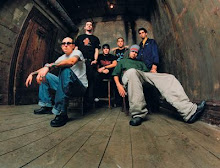Saturday, April 28, 2007
Petty tips for film-making
Now,I take my position as a normal cine-goer. A not-so-regular one at that. I tried to do some little analysis of films myself. of late, I conscioulsy started observing myself on how i responded to the sequence of events of a cinema . Here are excerpts.
Appreciation of any kind of art stems from the viewers' ability to interpret a seemingly complicated piece of art, which inturn gives him appreciation of his own genius . Then he thinks of the artist's genius on how the artist could come up with such a thing. And then comes appreciation to the artist. This concerns arts like painting, photography, handi-craft etc. where your primary goal is to communicate with the viewer( you point your view of life and how beautifu things look to you). And how interesting you make it for the viewer give a measure of merit in the piece of art.
Now to cinema. Golden rule for mediocre commercial films. Never disappoint the viewer. In the sense, do not show radical things to orthodox viewers who are immune to change. Depict a society which the viewer wants to see. And then play around with the story.
For other mainstream films, I have found that these things add. One of the strongest emotions that can be so easily created is nostalgia. And the cumilative effect of that is what the viewer has when he leaves the cinema. Associate the viewer with the characters. Make them identifiable. Generate familiarity with a few particular locations or background tunes. Like what Roobaroo and the fort do at the very end of RDB.
Let the film be informative. Let it have the same old story on strong new grounds. Okkadunnadu, Aithe are examples as such . Stress on societal values and unexpressed love between companions(Like how each person in a family has a soft corner for another even though they dont express it). As I have already said , make the plot open , obscure and complicated.Let the viewer decide the angle in which he wants to view the film. Let the viewer have something to understand even after the film is up. Now, when he gets over the unexplained things , he is convinced about his own genius and then he thinks of how beautifully the director has shown the essentials of the movie without compromising on anything that he wished to convey. The bottomline is that, you have something to say, and you dont want to spoon-feed it to the viewer. Just give him only quintessential things and let him develop the rest. Like what Fight-club , Matrix and other movies did. It is easy to tell the story just the way you conceived, but it is really difficult to complicate it, and still convey the message.
The next time you go to a film,notice the different kinds of emotions you go through and just see what in the story drove the emotion, and you will be clear on what basic grounds each scene in the story stands . I shall keep updating this column as and when I have new things to say. Thank-you for bearing with me.
Appreciation of any kind of art stems from the viewers' ability to interpret a seemingly complicated piece of art, which inturn gives him appreciation of his own genius . Then he thinks of the artist's genius on how the artist could come up with such a thing. And then comes appreciation to the artist. This concerns arts like painting, photography, handi-craft etc. where your primary goal is to communicate with the viewer( you point your view of life and how beautifu things look to you). And how interesting you make it for the viewer give a measure of merit in the piece of art.
Now to cinema. Golden rule for mediocre commercial films. Never disappoint the viewer. In the sense, do not show radical things to orthodox viewers who are immune to change. Depict a society which the viewer wants to see. And then play around with the story.
For other mainstream films, I have found that these things add. One of the strongest emotions that can be so easily created is nostalgia. And the cumilative effect of that is what the viewer has when he leaves the cinema. Associate the viewer with the characters. Make them identifiable. Generate familiarity with a few particular locations or background tunes. Like what Roobaroo and the fort do at the very end of RDB.
Let the film be informative. Let it have the same old story on strong new grounds. Okkadunnadu, Aithe are examples as such . Stress on societal values and unexpressed love between companions(Like how each person in a family has a soft corner for another even though they dont express it). As I have already said , make the plot open , obscure and complicated.Let the viewer decide the angle in which he wants to view the film. Let the viewer have something to understand even after the film is up. Now, when he gets over the unexplained things , he is convinced about his own genius and then he thinks of how beautifully the director has shown the essentials of the movie without compromising on anything that he wished to convey. The bottomline is that, you have something to say, and you dont want to spoon-feed it to the viewer. Just give him only quintessential things and let him develop the rest. Like what Fight-club , Matrix and other movies did. It is easy to tell the story just the way you conceived, but it is really difficult to complicate it, and still convey the message.
The next time you go to a film,notice the different kinds of emotions you go through and just see what in the story drove the emotion, and you will be clear on what basic grounds each scene in the story stands . I shall keep updating this column as and when I have new things to say. Thank-you for bearing with me.
Monday, April 23, 2007
Wonderful story
Well, even if you are very busy, this should qualify as a Must Read.
Sir Ernest Rutherford, President of the Royal Academy, and recipient of the
Nobel
Prize in Physics, related the following story:
Some time ago I received a call from a colleague. He was about to give a
student a zero for his
answer to a physics question, while the student claimed a perfect score. The
instructor and the
student agreed to an impartial arbiter, and I was selected. I read the
examination question: "Show
how it is possible to determine the height of a tall building with the aid
of a barometer." The
student had answered: "Take the barometer to the top of the building, attach
a long rope to it,
lower it to the street, and then bring it up, measuring the length of the
rope. The length of the rope
is the height of the building." The student really had a strong case for
full credit since he had
really answered the question completely and correctly! On the other hand, if
full credit were given,
it could well contribute to a high grade in his physics course and certify
competence in physics,
but the answer did not confirm this. I suggested that the student have
another try.
I gave the student six minutes to answer the question with the warning that
the answer should
show some knowledge of physics. At the end of five minutes, he hadn't
written anything. I asked if
he wished to give up, but he said he had many answers to this problem; he
was just thinking of
the best one. I excused myself for interrupting him and asked him to please
go on. In the next
minute, he dashed off his answer, which read: "Take the barometer to the top
of the building and
lean over the edge of the roof. Drop the barometer, timing its fall with a
stopwatch. Then, using
the formula x=0.5*a*t^2, calculate the height of the building."
At this point, I asked my colleague if he would give up. He conceded, and
gave the student almost
full credit. While leaving my colleague's office, I recalled that the
student had said that he had
other answers to the problem, so I asked him what they were. Well, "said the
student, "there are
many ways of getting the height of a tall building with the aid of a
barometer. For example, you
could take the barometer out on a sunny day and measure the height of the
barometer, the length
of its shadow, and the length of the shadow of the building, and by the use
of simple proportion,
determine the height of the building.""Fine," I said, "and others?"
"Yes," said the student, "there is a very basic measurement method you will
like. In this method,
you take the barometer and begin to walk up the stairs. As you climb the
stairs, you mark off the
length of the barometer along the wall. You then count the number of marks,
and this will give you
the height of the building in barometer units. A very direct method." "Of
course. If you want a
more sophisticated method, you can tie the barometer to the end of a string,
swing it as a
pendulum, and determine the value of g [gravity] at the street level and at
the top of the building.
From the difference between the two values of g, the height of the building,
in principle, can be
calculated. On this same tack, you could take the barometer to the top of
the building, attach a
long rope to it, lower it to just above the street, and then swing it as a
pendulum. You could then
calculate the height of the building by the period of the precession".
"Finally," he concluded,
"there are many other ways of solving the problem. Probably the best," he
said, "is to take the
barometer to the basement and knock on the superintendent's door. When the
superintendent
answers, you speak to him as follows: 'Mr. Superintendent, here is a fine
barometer. If you will tell
me the height of the building, I will give you this barometer."
At this point, I asked the student if he really did not know the
conventional answer to this
question. He admitted that he did, but said that he was fed up with high
school and college
instructors trying to teach him how to think.
The name of the student was Niels Bohr." (1885-1962) Danish Physicist; Nobel
Prize 1922; bestSir Ernest Rutherford, President of the Royal Academy, and recipient of the
Nobel
Prize in Physics, related the following story:
Some time ago I received a call from a colleague. He was about to give a
student a zero for his
answer to a physics question, while the student claimed a perfect score. The
instructor and the
student agreed to an impartial arbiter, and I was selected. I read the
examination question: "Show
how it is possible to determine the height of a tall building with the aid
of a barometer." The
student had answered: "Take the barometer to the top of the building, attach
a long rope to it,
lower it to the street, and then bring it up, measuring the length of the
rope. The length of the rope
is the height of the building." The student really had a strong case for
full credit since he had
really answered the question completely and correctly! On the other hand, if
full credit were given,
it could well contribute to a high grade in his physics course and certify
competence in physics,
but the answer did not confirm this. I suggested that the student have
another try.
I gave the student six minutes to answer the question with the warning that
the answer should
show some knowledge of physics. At the end of five minutes, he hadn't
written anything. I asked if
he wished to give up, but he said he had many answers to this problem; he
was just thinking of
the best one. I excused myself for interrupting him and asked him to please
go on. In the next
minute, he dashed off his answer, which read: "Take the barometer to the top
of the building and
lean over the edge of the roof. Drop the barometer, timing its fall with a
stopwatch. Then, using
the formula x=0.5*a*t^2, calculate the height of the building."
At this point, I asked my colleague if he would give up. He conceded, and
gave the student almost
full credit. While leaving my colleague's office, I recalled that the
student had said that he had
other answers to the problem, so I asked him what they were. Well, "said the
student, "there are
many ways of getting the height of a tall building with the aid of a
barometer. For example, you
could take the barometer out on a sunny day and measure the height of the
barometer, the length
of its shadow, and the length of the shadow of the building, and by the use
of simple proportion,
determine the height of the building.""Fine," I said, "and others?"
"Yes," said the student, "there is a very basic measurement method you will
like. In this method,
you take the barometer and begin to walk up the stairs. As you climb the
stairs, you mark off the
length of the barometer along the wall. You then count the number of marks,
and this will give you
the height of the building in barometer units. A very direct method." "Of
course. If you want a
more sophisticated method, you can tie the barometer to the end of a string,
swing it as a
pendulum, and determine the value of g [gravity] at the street level and at
the top of the building.
From the difference between the two values of g, the height of the building,
in principle, can be
calculated. On this same tack, you could take the barometer to the top of
the building, attach a
long rope to it, lower it to just above the street, and then swing it as a
pendulum. You could then
calculate the height of the building by the period of the precession".
"Finally," he concluded,
"there are many other ways of solving the problem. Probably the best," he
said, "is to take the
barometer to the basement and knock on the superintendent's door. When the
superintendent
answers, you speak to him as follows: 'Mr. Superintendent, here is a fine
barometer. If you will tell
me the height of the building, I will give you this barometer."
At this point, I asked the student if he really did not know the
conventional answer to this
question. He admitted that he did, but said that he was fed up with high
school and college
instructors trying to teach him how to think.
The name of the student was Niels Bohr." (1885-1962) Danish Physicist; Nobel
known for proposing the first 'model' of the atom with protons & neutrons,
and various energy
states of the surrounding electrons - the familiar icon of the small nucleus
circled by three
elliptical orbits ... but more significantly, an innovator in Quantum
Theory.
and various energy
states of the surrounding electrons - the familiar icon of the small nucleus
circled by three
elliptical orbits ... but more significantly, an innovator in Quantum
Theory.
Subscribe to:
Posts (Atom)



2006_Iron_Maiden_Holdings_Ltd..jpg)










